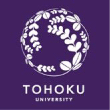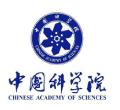
Message from Principal Investigator (PI)
A3 Foresight Program is a prestigious research grant started in 2005. It is based on an agreement among Japan, Korea and China and is to support joint research conducted by researchers of these three Asian countries (A3). The theme for FY2011 application was the future internet. We are very honored and proud of the acceptance of our project titled "Ultra-realistic Acoustic Interactive Communication on Next-generation Internet," with is conducted with strong colleagues in China and Korea.Being supported by rapid advancement of microelectronics for the last decades, the networking technologies have been amazingly advancing in terms of quantity. We believe that such quantitative advancement must be then applied to the advancement in terms of quality to truly advance the future internet.
Our team has a lot of researchers of acoustics. What could we then do for the above mentioned goal? Over today's internet, many acoustic communication services, such as voice communications (e.g., VoIP), have attracted more interests for telecommunication providers and users. Most of these services transmit only sound information itself without sufficient acoustic scene information so that users cannot perceive the sound filed and acoustic scene where the sound occurred. If both sound and sound field information is transmitted, listeners can perceive not only sound itself but also the associated acoustic scene. Furthermore, listeners can interactively communicate with each other in a wide listening area. Thus, we believe that such high-definition acoustic communications, i.e. ultra-realistic acoustic communications, will contribute a lot to new leading-edge communications and media technologies.
Namely, this project is to provide the complete solutions for interactive ultra-realistic acoustic communication over the next generation internet (NGI). The ultra-realistic acoustic communication consists of capturing and reproducing high spatial density signals and sound field spatial information with over hundred microphones and loudspeakers, respectively.
Through fully transmission of all sound field information (i.e., not only sounds themselves in today's acoustic communication but also acoustic atmosphere) over the highly QoS-guaranteed NGI, ultra-realistic acoustic communications enable furnish a highly realistic experience "beyond" space and time. The interactive ultra-realistic acoustic communications will then provide the possibility to transmit ultra-realistic audio with associated video for future broadcasting over NGI, and makes many promising real-time interactive applications, such as, tele-presence communications, acoustic scene interactive perception, tele-medicine and remote collaborative realistic, music session with high sense-of-presence.
Our team is strong. I believe that this project will surely contribute to communications and media leading-edge technologies for NGI applications, and will strengthen the exchange and collaboration in research and education between China, Japan and Korea.
SUZUKI, Yôiti, Japanese Principal Investigator (PI)
September, 1st, 2011




